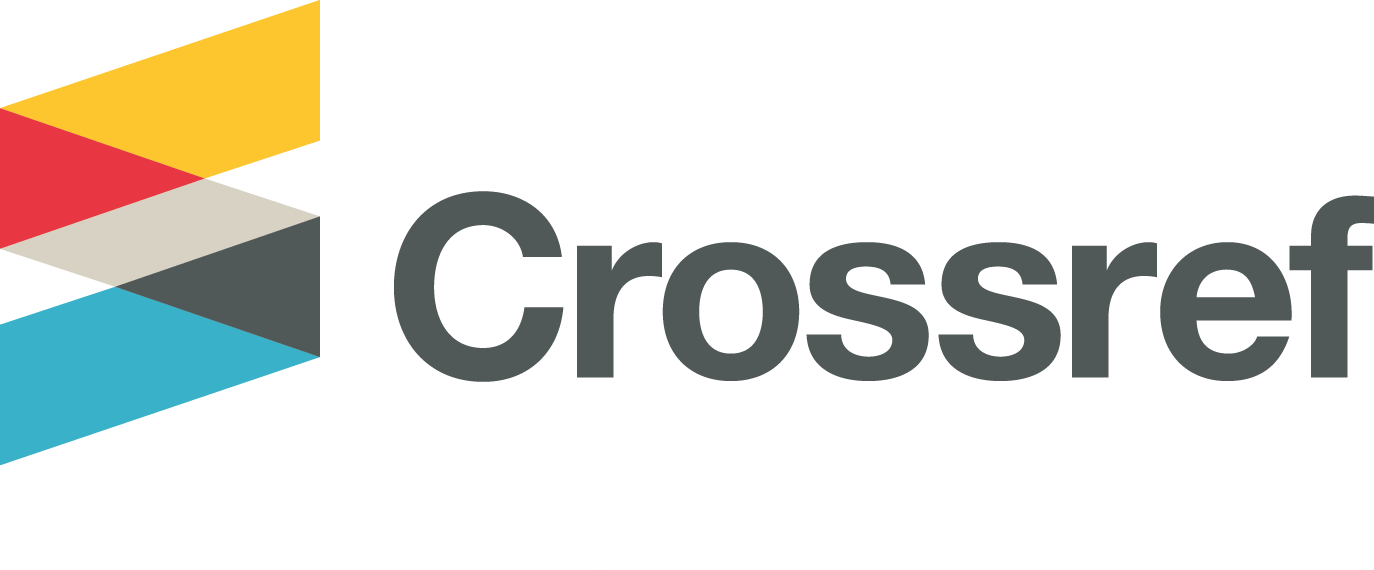Strategies to Increase Parents' Awareness of Stunting Prevention: Community Service Initiatives in Riau Province in Supporting the Sustainable Development Goals (SDGs)
Abstract
The community service activity aims to enhance the understanding of parents and young couples regarding stunting and the importance of ensuring that children are free from this issue to achieve the Sustainable Development Goals (SDGs) in Riau Province. The primary challenge faced is the low level of knowledge about stunting and its impacts, which can lead to nutritional deficiencies that potentially affect children's health and intellectual development. The method employed in this initiative is an interactive workshop involving 50 participants, including parents, prospective parents, and healthcare professionals. This activity is conducted in collaboration with the local Health Department, which serves as a partner to provide materials and facilitators. Evaluation is carried out through pre-tests and post-tests to assess participants' knowledge improvement, as well as surveys regarding changes in attitudes and behaviors related to child nutrition. Data collection methods include questionnaires and interviews as primary data, along with literature reviews as secondary data. The results achieved from this activity indicate an 80% improvement in participants' understanding of stunting prevention, as well as positive changes in parenting practices and children's nutritional intake. Through this initiative, it is hoped that the community will become more cognizant of the importance of nutrition during the first 1,000 days of life, which can lead to a healthier and more qualified generation.
Kegiatan pengabdian kepada masyarakat ini bertujuan untuk meningkatkan pemahaman orang tua dan pasangan muda mengenai stunting serta pentingnya memastikan anak-anak bebas dari masalah ini guna mencapai Tujuan Pembangunan Berkelanjutan (Sustainable Development Goals/SDGs) di Provinsi Riau. Masalah yang dihadapi adalah rendahnya pengetahuan tentang stunting dan dampaknya, yang dapat mengakibatkan anak-anak mengalami defisiensi gizi yang berpotensi mempengaruhi kesehatan dan perkembangan intelektual mereka. Metode yang digunakan dalam pengabdian ini adalah workshop interaktif dengan melibatkan 50 peserta, termasuk orang tua, calon orang tua, dan tenaga kesehatan. Kegiatan ini bekerja sama dengan Dinas Kesehatan setempat sebagai mitra untuk memberikan materi dan fasilitator. Evaluasi dilakukan melalui pre-test dan post-test untuk mengukur peningkatan pengetahuan peserta, serta survei mengenai perubahan sikap dan perilaku terkait gizi anak. Metode pengumpulan data dilakukan dengan mengisi angket dan wawancara sebagai data primer, serta studi pustaka sebagai data sekunder. Hasil yang telah dicapai dari kegiatan ini menunjukkan peningkatan pemahaman peserta tentang pencegahan stunting sebesar 80%, serta perubahan positif dalam pola asuh dan asupan gizi anak. Melalui kegiatan ini, diharapkan masyarakat lebih sadar akan pentingnya gizi dalam 1000 hari pertama kehidupan, yang dapat berdampak pada generasi yang lebih sehat dan berkualitas.
Keywords
Full Text:
FULL TEXTReferences
Arumsari, W, et all (2022). Evaluasi Pelaksanaan Program Pencegahan Stunting di Era Pandemi Covid-19. Jurnal Manajemen Kesehatan Indonesia, 10(2). https://doi.org/10.14710/jmki.10.2.2022.82-94
Atamou, L., et all (2023). Analysis of the Determinants of Stunting among Children Aged below Five Years in Stunting Locus Villages in Indonesia. Healthcare (Switzerland), 11(6). https://doi.org/10.3390/healthcare11060810
Case, A., & Paxson, C. (2006). Children’s health and social mobility. In Future of Children (Vol. 16, Issue 2). https://doi.org/10.1353/foc.2006.0014
Deaton, A., & Drèze, J. (2009). Food and nutrition in India: Facts and interpretations. In Economic and Political Weekly (Vol. 44, Issue 7).
Dwijayanti, F., & Setiadi, H. (2020). Pentingnya Kesehatan Masyarakat, Edukasi Dan Pemberdayaan Perempuan Untuk Mengurangi Stunting Di Negara Berkembang. Jurnal Prosiding Seminar Nasional Kesehatan, 2(01).
Fogel, R. W. (1997). Chapter 9 New findings on secular trends in nutrition and mortality: Some implications for population theory. In Handbook of Population and Family Economics (Vol. 1, Issue PART A). https://doi.org/10.1016/S1574-003X(97)80026-8
Guerrant, R. L., Deboer, M. D., Moore, S. R., Scharf, R. J., & Lima, A. A. M. (2013). The impoverished gut - A triple burden of diarrhoea, stunting and chronic disease. In Nature Reviews Gastroenterology and Hepatology (Vol. 10, Issue 4). https://doi.org/10.1038/nrgastro.2012.239
Hoddinott, J., Alderman, H., Behrman, J. R., Haddad, L., & Horton, S. (2013). The economic rationale for investing in stunting reduction. Maternal and Child Nutrition, 9(S2). https://doi.org/10.1111/mcn.12080
Horton, S., & Hoddinott, J. (2018). Benefits and Costs of the Food and Nutrition Targets for the Post-2015 Development Agenda. In Prioritizing Development: A Cost Benefit Analysis of the United Nations’ Sustainable Development Goals. https://doi.org/10.1017/9781108233767.022
Horton, S., & Steckel, R. H. (2011). Global economic losses attributable to malnutrition 1900-2000 and projections to 2050. Cambridge University Press.
Judge, T. A., & Cable, D. M. (2004). The effect of physical height on workplace success and income: Preliminary test of a theoretical model. Journal of Applied Psychology, 89(3). https://doi.org/10.1037/0021-9010.89.3.428
Kemenkes RI. (2021). Kementerian Kesehatan Republik Infonesia Tahun 2022. In Pusdatin.Kemenkes.Go.Id.
Kementerian Kesehatan Republik Indonesia. (2018). Hasil Riset Kesehatan Dasar Tahun 2018. Kementrian Kesehatan RI, 53(9).
Kementerian Kesehatan Republik Indonesia. (2023). Survei Kesehatan Indonesia Tahun 2023. https://drive.google.com/file/d/1rjNDG_f8xG6-Y9wmhJUnXhJ-vUFevVJC/view
KEMENTERIAN SEKRETARIAT NEGARA, & PRESIDEN, S. W. (2021). Angka Prevalensi Stunting tahun 2020 Diprediksi Turun. KEMENTERIAN SEKRETARIAT NEGARA RI. https://stunting.go.id/angka-prevalensi-stunting-tahun-2020-diprediksi-turun/#:~:text=Untuk mencapainya%2C harus diupayakan angka,NTB)%2C dan Sulawesi Barat.
Kustanto, A. (2021). THE PREVALENCE OF STUNTING, POVERTY, AND ECONOMIC GROWTH IN INDONESIA: A PANEL DATA DYNAMIC CAUSALITY ANALYSIS. Journal of Developing Economies, 6(2). https://doi.org/10.20473/jde.v6i2.22358
Lubis, H., Rosyida, A. H., & Solikhatin, N. H. (2019). Pola Asuh Efektif Di Era Digital. PLAKAT (Pelayanan Kepada Masyarakat), 1(2). https://doi.org/10.30872/plakat.v1i2.2967
Martorell, R., & Young, M. F. (2012). Patterns of stunting and wasting: Potential explanatory factors. Advances in Nutrition, 3(2). https://doi.org/10.3945/an.111.001107
Mediacenter.riau. (2024). Berhasil Turunkan Stunting, Riau Masuk Urutan Tiga Terendah di Indonesia. Mediacenter.Riau. https://mediacenter.riau.go.id/read/84619/berhasil-turunkan-stunting-riau-masuk-urutan-.html
Nazidah, M, et all (2022). Pengaruh Stunting pada Kognitif Anak Usia Dini. Yinyang: Jurnal Studi Islam Gender Dan Anak. https://doi.org/10.24090/yinyang.v17i1.4964
Roberts, M., et all. (2022). The Effects of Nutritional Interventions on the Cognitive Development of Preschool-Age Children: A Systematic Review. In Nutrients (Vol. 14, Issue 3). https://doi.org/10.3390/nu14030532
Ruel, M. T., & Alderman, H. (2013). Nutrition-sensitive interventions and programmes: How can they help to accelerate progress in improving maternal and child nutrition? In The Lancet (Vol. 382, Issue 9891). https://doi.org/10.1016/S0140-6736(13)60843-0
Setyowati, K., Prakoso, S. G., Utomo, I. H., Parwiyanto, H., Suryawati, R., Nugroho, R. A., Susiloadi, P., & Santoso, S. A. (2022). Digital Literacy and The Prevention of Stunting from Suburban Perspective: Case in Sepat Village, Sragen. In Proceedings of the 7th International Conference on Social and Political Sciences (ICoSaPS 2022). https://doi.org/10.2991/978-2-494069-77-0_8
Shekar, M., Kakietek, J., Dayton Eberwein, J., & Walters, D. (2017). An Investment Framework for Nutrition: Reaching the Global Targets for Stunting, Anemia, Breastfeeding, and Wasting. In An Investment Framework for Nutrition: Reaching the Global Targets for Stunting, Anemia, Breastfeeding, and Wasting. https://doi.org/10.1596/978-1-4648-1010-7
Siak, P. K. (2023). ANALISIS HASIL PENGUKURAN STUNTING BALITA KABUPATEN SIAK TAHUN 2023. https://istanadata.siakkab.go.id/storage/assets/files/PUBLIKASI DATA STUNTING KABUPATEN SIAK TAHUN 2023.pdf
Strauss, J., & Thomas, D. (1998). Health, Nutrition, and Economic Development. Journal of Economic Literature, 36(2).
UNICEF. (2015). The State of the World’s Children 2015: Reimagine the Future: Innovation for Every Child. In New York: UNICEF.
UNICEF. (2020). Levels And Trends Child Malnutrition: Key Findings Of The 2020 Edition of the Joint Child Malnutrition Estimate. Geneva: WHO, 24(2).
Victoria CG, et all. (2008). Maternal and Child Undernoutrition: Consenquences for adult health and human capital. Lancet, 340(57), 317. https://doi.org/DOI:10.1016/S0140-6736(07)61692-4
Wardani, L. K., et all (2023). Risks of Stunting and Interventions to prevent Stunting. Journal of Community Engagement in Health, 6(2). https://doi.org/10.30994/jceh.v6i2.528
Wiranata, I. G. L. A. (2019). MENGOPTIMALKAN PERKEMBANGAN ANAK USIA DINI MELALUI KEGIATAN PARENTING. PRATAMA WIDYA : JURNAL PENDIDIKAN ANAK USIA DINI, 4(1). https://doi.org/10.25078/pw.v4i1.1068
DOI: http://dx.doi.org/10.30872/plakat.v6i2.17109
Refbacks
- There are currently no refbacks.
Copyright (c) 2024 Yusnarida Eka Nizmi, Yessi Olivia, Rahmi Yulia, Tuah Kalti Takwa

This work is licensed under a Creative Commons Attribution-ShareAlike 4.0 International License.
Plakat : Jurnal Pelayanan Kepada Masyarakat Published by Faculty of Social and Political Siences, University of Mulawarman, Samarinda, East Kalimantan and This work is licensed under a Creative Commons Attribution-ShareAlike 4.0 International License.
________________________________________________
Plakat : Jurnal Pelayanan Kepada Masyarakat
Faculty of Social and Political Siences, University of Mulawarman
Jl. Muara Muntai Kampus Gn. Kelua Samarinda 75411
Phone: +62 813 35350368
E-Mail: plakat@fisip.unmul.ac.id

















